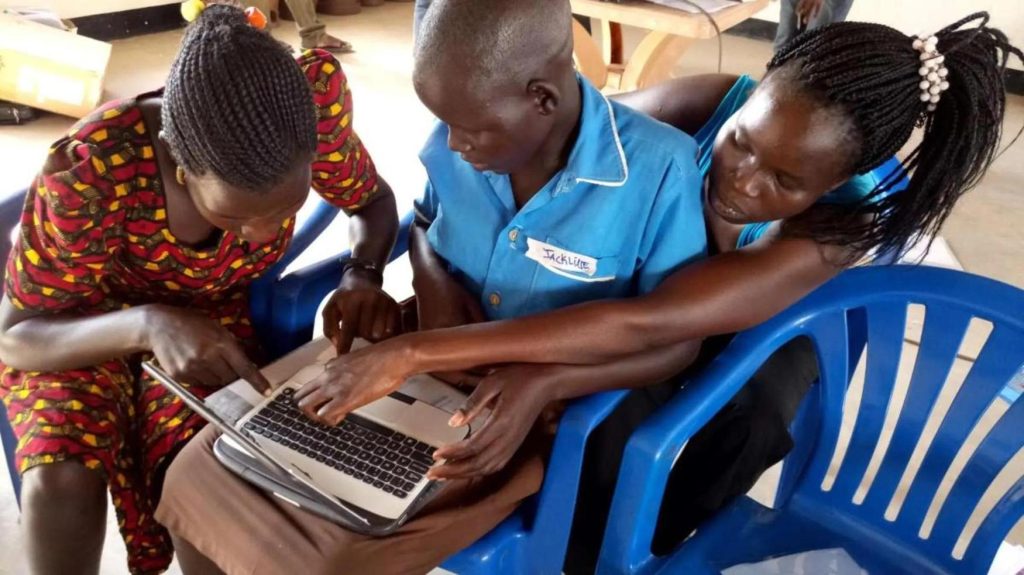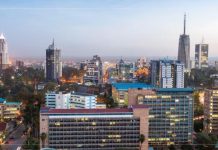Africa-Press – Lesotho. Richard Hlomador, K-NET’s Founder & Chief Network Architect, and Akim Benamara, Founder of TechAfrica News discussed the role of K-NET in shaping the future of broadcasting in Africa during this year’s Casbat event in Dubai.
Tell us why you have decided to exhibit at Cabsat 2023 in Dubai and what did you showcase?
We decided to exhibit at Cabsat 2023 in Dubai for several compelling reasons. Firstly, as
K-NET, we have built an advanced and customized State-of-the-Art Teleport specifically to cater to the unique needs of the African market. We have recognized that many satellite operators require our teleport services to effectively sell their solutions to their consumers
across sub-Saharan Africa. Our strategy is simple yet powerful: by allowing satellite operators to utilize our efficient and state-of-the-art teleports, we can support their existing clients and enhance their operations.
Cabsat provides an ideal platform for us to connect with satellite operators that may be interested in contracting directly with customers while outsourcing their ground-segment teleport operation to us K-NET, particularly in terms of processing their spectrum (MHz). This arrangement offers convenience and efficiency for satellite companies, and Cabsat
presents an opportunity for us to showcase this service to potential partners.
Furthermore, Cabsat also attracts broadcasters with whom we directly collaborate. Our teleport operations encompass both data and broadcasting services, and having these broadcasters present at the show allows us to strengthen existing relationships and explore new collaborations.
“We have invested in four satellite Hubs namely iDirect Evolution, Newtec Dialog, Ayecka and ComTech which are dedicated to VSAT services pointing to different satellites based on clients’ specific requirements.”
Satellite operators are increasingly seeking to offer IP-data services to their clients, and this is an area where we are highly relevant. We have invested in four satellite Hubs
namely iDirect Evolution, Newtec Dialog, Ayecka and ComTech which are dedicated to VSAT services pointing to different satellites based on clients’ specific requirements.
Our Ayecka hub specifically is designed to offer reliable IOT services across the West African Region as it relays low transactional data across the network.
site
We establish a VPN backhaul from our NOC to any countries where we have remote terminals installed. At these sites, we use 90 cm TV Receive Only (TVRO) dishes to provide the service at a very low cost. These offerings put us in a unique position to offer Virtual Network Operator (VNO) services for satellite, broadcast, and telecoms across East, West, and certain Central African regions.
We possess the capabilities to receive contribution feeds from anywhere in the world, utilizing stable and reliable protocols such as SRT (Secure Reliable Transport) and Zixi, among others. These protocols ensure that contribution feeds adhere to all industry standards and maintain the required level of stability and reliability.
In summary, our decision to exhibit at Cabsat 2023 was driven by our aim to expand our
reach, forge partnerships with satellite companies, strengthen relationships with broadcasters, showcase our advanced teleport services, and highlight our expertise in providing stable and reliable contribution feeds. We believe that Cabsat offers an ideal platform to connect with industry players, explore collaborations, and demonstrate the value we bring to the satellite and broadcasting sectors.
As a provider of broadcasting services in Africa, how does K-NET contribute to bridging the digital divide and ensuring access to quality television content for viewers across the continent, including in remote or underserved areas?
At K-NET, we have taken a proactive approach to address one of our major agendas: ensuring reliable signal reception during adverse weather conditions. Unlike other Direct-to-Home (DTH) platforms in Africa that suffer from signal drops and disruptions when it rains, our DTH platforms, both in high-definition (HD) and standard definition (SD), are specifically designed to withstand our local environments.
“Most of our remote sites are equipped with 3.7-meter antennas, allowing for excellent wire-in-the-air transmission using the KU band. This showcases our commitment to delivering quality and availability to our customers.”
We engineer our systems from scratch, considering factors such as contribution feeds and link budgets to guarantee high availability between the transmission (TX) site and the satellite itself. Our teleports are sizable, ranging from 11.3 to 7.3 and 4.5 meters & more.
In locations where we have 4.5-meter antennas and below, we ensure the presence of amplifiers to compensate for any potential signal loss.
Most of our remote sites are equipped with 3.7-meter antennas, allowing for excellent wire-in-the-air transmission using the KU band. This showcases our commitment to delivering quality and availability to our customers. Bridging the digital divide has been a core focus for K-NET. We understand that connectivity plays a vital role in educating and empowering individuals.
Through our award-winning ITU platform called “Managed Rural IT Infrastructure Development” (MRIID), we have built Rural Telephony platforms that enable underserved communities, including villagers, to stay connected.
Our MRIID solution is versatile and can be implemented anywhere in the world, ensuring reliable services. For instance, when setting up a GSM 2G platform in a remote area, we utilize solar power to supply energy to the site and establish satellite backhaul connections with the interested parties telecom provider or other entities seeking to offer services in that region. We have successfully deployed installations in Ghana, Liberia, and Sierra Leone over the past 15+ years.
“One personal success story that deeply impacted me was when we successfully installed our first Rural Telephony site in Sefwi Wiawso, a rural area in Ghana. The experience was incredibly moving and demonstrated the transformative power of connectivity in underserved communities.”
It’s important to note that at K-NET, we are not operators ourselves. Our primary focus is
on supporting operators such as TV broadcasters, mobile network operators, and banks.
We provide backend services to consumer-focused companies, enabling them to deliver seamless connectivity and enhance their operations.
In summary, our tailored DTH platforms, extensive engineering efforts, and innovative MRIID solution have allowed us to guarantee signal quality, availability, and connectivity in
challenging environments. By bridging the digital divide, we are contributing to the education and empowerment of individuals and supporting operators in their quest to deliver reliable services.
Could you share any success stories that highlight the impact of K-NET’s services?
One personal success story that deeply impacted me was when we successfully installed our first Rural Telephony site in Sefwi Wiawso, a rural area in Ghana. The experience was incredibly moving and demonstrated the transformative power of connectivity in underserved communities.
As I sat on a village stool, connecting my laptop to the recently installed WiFi, I could
feel the anticipation building. Approximately 45 minutes after the site went live, offering both 2G and WiFi connectivity, I noticed the chief of the community and his entourage approaching me with immense joy, celebrating and dancing. To my surprise, I learned that many people in the community already had phones with SIM cards, as usually they would have to climb mountains/hills or visit the next town with cell phones service in order to make a call. Here they were, in the comfort of their own environment & ready to connect to the network provided by Airtel (the company that contracted K-NET for the project). The atmosphere was filled with passion, excitement, and genuine appreciation for the network that had just been established. Recognizing the significance of the moment, the chief promptly organized a security unit to protect the newly installed equipment.
Teachers in the community approached me, expressing their belief that this installation would truly transform the lives of the people in the area. They shared their optimism about the potential impact on healthcare and education. Doctors would have access to the internet for research and communication with their colleagues, leading to improved medical services. Teachers coming to the village could now take online courses to enhance their knowledge and positively influence the lives of students. It felt as if the village had suddenly been illuminated by the power of connectivity overnight.
“Teachers coming to the village could now take online courses to enhance their knowledge and positively influence the lives of students. It felt as if the village had suddenly been illuminated by the power of connectivity overnight.”
This remarkable experience served as a catalyst for my drive and determination to continue
developing innovative solutions that bring connectivity and its associated benefits to consumers. One such solution is our Direct-to-Home (DTH) platform, which has made it possible for people across Ghana to receive affordable DTH services. With approximately
6 million viewers within Ghana alone, our DTH service extends its coverage to the entire West African region.
E.g During Covid, this was the singular platform that provided quality education to the homes of all Ghanaian children who were unable to attend school.
Witnessing the profound impact of providing connectivity to rural communities has fuelled my commitment to advancing technological solutions that bridge the digital divide. I am inspired by the positive changes that connectivity can bring, and I am determined to continue working towards empowering more individuals and communities through accessible and affordable telecommunications services.
How does K-NET ensure the security and reliability of its broadcast services,
particularly in areas where infrastructure may be less developed?
K Net
When it comes to ensuring the security and reliability of our broadcast services in less developed areas with limited infrastructure, we have implemented several measures to
address these concerns. Firstly, in terms of content security, we leverage various encryption technologies that are available today. These technologies allow us to protect
the integrity and confidentiality of the content being transmitted. Secondly, We specifically adopt encryption methods that require minimal human intervention, while regularly changing encryption codes to further enhance security.
In terms of physical protection, our broadcast infrastructure in Africa is typically located in
areas where we share space with major broadcasters in Ghana who have a wide presence across the country. These broadcasters have established logistics for security, and we work closely with them to enhance the overall protection of our infrastructure. By leveraging
their existing security measures, we can ensure the physical safety of our broadcast facilities.
Furthermore, we have implemented closed-circuit television (CCTV) monitoring systems on-site to actively monitor the premises and detect any potential security issues. Additionally, we utilize Internet of Things (IoT) sensors that record various site parameters,
providing us with real-time data on the status and conditions of our infrastructure. These IoT sensors are integrated into our Ayecka Hub, enabling us to proactively identify and address any potential vulnerabilities or risks.
Overall, our comprehensive approach to security encompasses both content protection through encryption technologies and physical protection through collaborations with established broadcasters, CCTV monitoring, and IoT sensor utilization. These measures
ensure the reliability and security of our broadcast services, even in areas that may have less developed infrastructure.
What does the future hold for the industry in your opinion and how do you see
K-NET being part of that future?
The future of the industry is exceptionally promising, and I strongly believe that K-NET will
play a crucial role in shaping that future, particularly in the domain of broadcasting in West Africa. Our company is at the forefront, spearheading the dominance of broadcasting in this region. Our overarching objective is to establish a comprehensive range of platforms that cater to the evolving needs of new media solutions in West Africa, encompassing technologies such as OTT, SRT, Zixi, and more. We are determined to not only match the services provided in Europe but to outperform them.
In our pursuit of delivering top-level broadcasting services, we strive to surpass the practices employed by European companies.
“In our pursuit of delivering top-level broadcasting services, we strive to surpass
the practices employed by European companies. Many of these companies rely
on off-the-shelf solutions, while we have invested in tailor-made systems specifically designed for our unique environment.”
Many of these companies rely on off-the-shelf solutions, while we have invested in tailor-made systems specifically designed for our unique environment. Our infrastructure in Africa faces challenges, such as frequent power outages blackouts, which are less common in more developed regions like the UK. Nevertheless, we have implemented robust mitigation
systems to ensure uninterrupted availability throughout these circumstances.
To address the specific needs of our environment, we have made solar power our primary energy source. While we also utilize generators and the national grid to charge batteries, our equipment relies on inverters to convert power, ensuring a consistent and reliable power supply. By tailoring our solutions to the local context, we can overcome infrastructure limitations and deliver high-quality broadcasting services.
Broadcasting is undeniably the way forward, especially considering the diverse forms of media consumption available today.
Gone are the days when we had to adhere to fixed schedules and rush home to catch specific programs on CNN or BBC. With the advent of new media and broadcasting, we now have the freedom to access news networks and content of our choice from anywhere using
tablets and other devices. This lifestyle shift is becoming the norm for a significant portion of the population.
While embracing the opportunities of new media, we are aware of the challenges it brings, particularly the spread of fake news and misinformation. With the rise of artificial intelligence (AI), identifying legitimate content can become more complex. However, we firmly believe that AI will also be instrumental in helping us discern and verify authentic information, acting as a valuable tool to maintain trust and credibility in the broadcasting
industry.
In conclusion, broadcasting is not only here to stay but will continue to thrive in the future.
K-NET is poised to be a driving force in this industry, leveraging tailor-made systems, renewable energy sources, and cutting-edge technologies. We are committed to providing exceptional broadcasting services, adapting to the evolving media landscape, and ensuring that West Africa remains at the forefront of innovation in the field.
For More News And Analysis About Lesotho Follow Africa-Press






